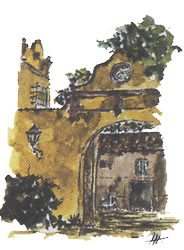EN 16438: 2014. Quantitative surface test for the evaluation of fungicidal activity of chemical or yeasticidal disinfectants and antiseptics used in the veterinary area on non-porous surfaces without mechanical action. Test method and requirements (phase 2, step 2).
Test accredited by ENAC (Spanish National Accreditation Entity), for standard mandatory microorganisms and additionals.
This standard establishes the procedure to know if an antiseptic or disinfectant used in the veterinary area on non-porous surfaces, without mechanical action, has fungicidal or yeasticidal activity taking into account the practical conditions of use, that can influence its action as the microorganisms On the surface, the presence of interfering substances, the contact time and the temperature. The products tested under these conditions are those which may be used in veterinary applications on non-porous surfaces, without the use of mechanical actions, in situations such as breeding, exploitation, production, transport and disposal of animals, except when Food chain after its slaughter and entry into the processed food industry. In order to be tested, the products must form a homogeneous preparation which is physically stable when diluted in hard water or in water in the case of ready-to-use products. The method uses as mandatory microorganisms for the fungicidal activity Aspergillus brasiliensis and Candida albicans, and for the yeasticidal activity Candida albicans, but other optional microorganisms may be included as desired. The mandatory test temperature is 10°C, although it may be further tested at 4°C, 20°C or 40°C. The mandatory contact time is 60 minutes, but additional 5, 30 or 120 minutes may be included. There must be an inherent substance of very high dirty or low dirt conditions, as chosen, indicated by the standard, and any other additional desired. For the product to be considered active under the test conditions indicated by this standard, it must achieve a reduction in the number of microorganisms, for the corresponding species indicated, as chosen, of 3 log10.



